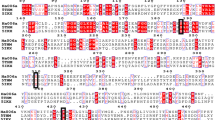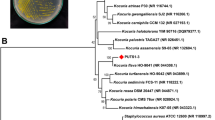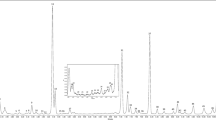Abstract
FLAVONOIDS are rare in the animal kingdom, but Ford1, using a simple colour test, suggested that they were present in a number of butterflies. A difficulty in characterizing the pigments is the fact that a large number of specimens, of the order of hundreds, is required, and it is not always possible to obtain one species in such large numbers. Morris and Thomson2, using some 400 specimens, identified tricin and a glycoside of this flavone as well as a glycoside of another flavone, orientin, from the wings of the marble white butterflies Melanargia galathea. They found3 that the small heath butterflies Coenonympha pamphilus contained tricin both free and as glycoside but not orientin. The flavonoids seem to be obtained by the insects through the caterpillars feeding on a particular food host. Carotenoids, on the other hand, are well known in animals, and Goodwin4 has suggested that insects accumulate their dietary carotenoids as such or that they may be altered to form other carotenoids not found in the insects' food. A number of specimens of the common blue butterfly Polyommatus icarus Rott. were collected both in France and in England with a view to characterizing the flavonoids and the carotenoids and to comparing these with their food plants. One hundred specimens of P. icarus from Box Hill, Surrey, were feeding on rest harrow Ononis repens and those from St Martial, France (800 specimens), on a species of Anthyllis; both plants are members of the Leguminosae.
This is a preview of subscription content, access via your institution
Access options
Subscribe to this journal
Receive 51 print issues and online access
$199.00 per year
only $3.90 per issue
Buy this article
- Purchase on SpringerLink
- Instant access to full article PDF
Prices may be subject to local taxes which are calculated during checkout
Similar content being viewed by others
References
Ford, E. B., Roy. Entomol. Soc., 19A, 92 (1944).
Morris, S. J., and Thomson, R. H., J. Insect Physiol., 9, 391 (1963).
Morris, S. J., and Thomson, R. H., J. Insect Physiol., 10, 377 (1964).
Goodwin, T. W., The Comparative Biochemistry of the Carotenoids (Chapman and Hall, London, 1952).
Harborne, J. B., Comparative Biochemistry of the Flavonoids (Academic Press, London, 1967).
Valadon, L. R. G., and Mummery, R. S., Biochem. J., 106, 479 (1968); Photochemistry, 6, 983 (1967).
Goodwin, T. W., and Srisukh, S., Nature, 161, 525 (1948); Biochem. J., 45, 263.
Harborne, J. B., Phytochemistry, 8, 1449 (1969).
Author information
Authors and Affiliations
Rights and permissions
About this article
Cite this article
FELTWELL, J., VALADON, L. Plant Pigments identified in the Common Blue Butterfly. Nature 225, 969 (1970). https://doi.org/10.1038/225969a0
Received:
Revised:
Issue date:
DOI: https://doi.org/10.1038/225969a0
This article is cited by
-
10.1007/BF00194770
CrossRef Listing of Deleted DOIs (2011)
-
Flavonoid pigments in chalkhill blue (Lysandra coridon Poda) and other lycaenid butterflies
Journal of Chemical Ecology (1987)
-
Flavonoid pigments in marbled white butterfly (Melanargia galathea) are dependent on flavonoid content of larval diet
Journal of Chemical Ecology (1985)
-
Corrigendum
Nature (1977)



